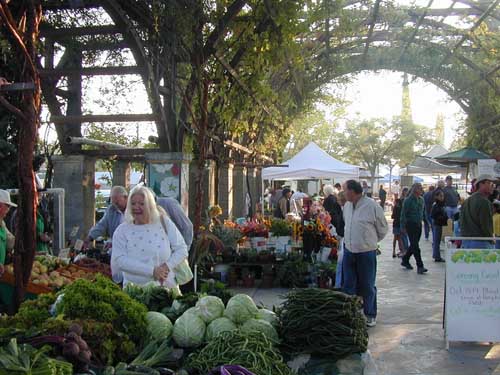
We're writing this book because we've both had really excellent working experiences and we've both had and observed many work environments that were deeply unsatisfying. A wide range of factors that contribute to the quality of an organization's life sustaining qualities, including, for example: Are people encouraged to be creative? Do they get to see the effect of the efforts? Does the workplace acknowledge our needs as social animals? Is there a conscious and continuous consideration of the relationship between the organization and the natural environment. Architectural considerations are important, as captured in the compendium of illustrations you can link to on the left.
As we've considered in several previous articles, the quality of the work environment all too
 frequently falls between the cracks. It's everybody's concern, but usually it's nobody's job. Yet, as we've tried to capture in graphic below, the work environment has powerful strategic implications for all sorts of organizational outcome measures, such as productivity and employee engagement. A lot of people complain about the work environment, but, unlike the weather, it is something that one can actually do a lot about!
frequently falls between the cracks. It's everybody's concern, but usually it's nobody's job. Yet, as we've tried to capture in graphic below, the work environment has powerful strategic implications for all sorts of organizational outcome measures, such as productivity and employee engagement. A lot of people complain about the work environment, but, unlike the weather, it is something that one can actually do a lot about!Of course, this is an extraordinarily exciting endeavor that is putting us in contact with a great
 deal of stimulating information, such as this set of videos on IDEO's very innovative workplace or via the brilliant thinking of the scientist and architect, Christopher Alexander, who has written on The Timeless Way of Building in such exquisite terms. (The picture to your right links to an in-depth presentation of Alexander's thinking.)
deal of stimulating information, such as this set of videos on IDEO's very innovative workplace or via the brilliant thinking of the scientist and architect, Christopher Alexander, who has written on The Timeless Way of Building in such exquisite terms. (The picture to your right links to an in-depth presentation of Alexander's thinking.)A particular way of considering alternative futures and articulating strategy is at the heart of this book. We have found that, in general, organizations don't do a very good job of thinking broadly about the environment that they are in and that they, therefore, miss potent driving forces that shape the general political and economic destiny of societies and industries. Not seeing factors that seem completely obvious in hindsight represents a powerful strategic error. The leaders of many organizations and communities spend truckloads of time considering their values and the vision and/or piling through veritable encyclopedias full of spread sheets and charts without having the ability or willingness to look outward at the critical uncertainties that will determine what the profile of the workforce will be and what incentives will appeal to it.
 We've developed a three step process for investigating life sustaining work environments through the integration of systems thinking and scenario planning in the service of strategic leadership. We call it Structural Dynamics. The approach is sort of like participatory theater, where the structure of the drama--the movement from pre-production to staging to rehearsal to performance to post-production--is mapped out in some detail, but the actual content of the play itself will be generated by the members of the specific organization working within a particular industry (or set of industries) that is seeking to design a life sustaining work environment. The process is designed to yield discoveries at each step along the way, creating a sort of flow state of new thinking, which as Charlie Keifer and Robin Charbit have discussed, is a constant companion of insight.
We've developed a three step process for investigating life sustaining work environments through the integration of systems thinking and scenario planning in the service of strategic leadership. We call it Structural Dynamics. The approach is sort of like participatory theater, where the structure of the drama--the movement from pre-production to staging to rehearsal to performance to post-production--is mapped out in some detail, but the actual content of the play itself will be generated by the members of the specific organization working within a particular industry (or set of industries) that is seeking to design a life sustaining work environment. The process is designed to yield discoveries at each step along the way, creating a sort of flow state of new thinking, which as Charlie Keifer and Robin Charbit have discussed, is a constant companion of insight.We'll be writing more about developments related to our book periodically. So, stay tuned!

No comments:
Post a Comment